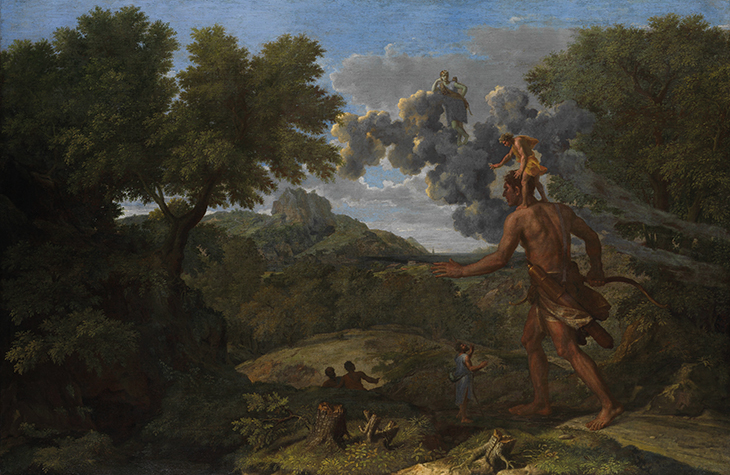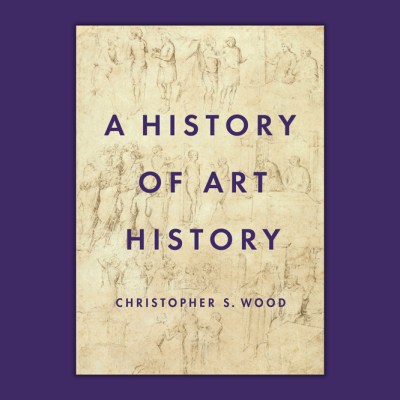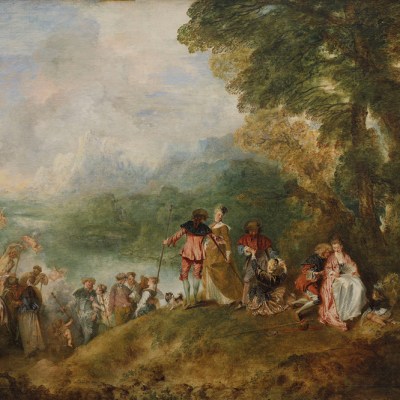‘We must not judge by our senses alone but by reason,’ wrote Nicolas Poussin to his friend and, in November 1647, disgruntled patron Paul Fréart de Chantelou. The former French ambassador to the papal court had commissioned a copy of the Seven Sacraments Poussin had painted in the 1630s and, after failing to find a copyist who met his standards, the artist decided to paint another set himself. But upon seeing the Ordination from the series alongside The Finding of Moses, made in the same year for a different client, Chantelou was so disappointed that he accused Poussin of painting the Old Testament scene with ‘greater love’.
 In a letter demonstrating the cool intellectualism that so many associate with his work, Poussin wrote, ‘Can you not see that […] the subjects that I am depicting for you require a different treatment? The whole art of painting lies in this.’ He went on to explain that his art was governed by the musical scales (Dorian, Phrygian, Lydian) discovered by ‘those fine old Greeks’ to ‘arouse the soul of the spectator to divers emotions’. Here the classically educated Norman aristocrat was drawing on the heady humanism he had absorbed as a student of Domenichino in Rome, but the Ordination suggests that he wasn’t merely distracting Chantelou with what was then cutting-edge theory. The canvas shows Christ and his disciples arranged in a balanced tableau outside the walls of Jerusalem. Christ raises his left hand skyward, grasping the keys which he is about to hand over to a kneeling Peter. In the background stands a mysterious column, not a ruin but hardly a statue, on which is inscribed a capital E, for ecclesia or, perhaps, the Greek for ‘thou art’ (as in ‘thou art Peter, and upon this rock I will build my church’).
In a letter demonstrating the cool intellectualism that so many associate with his work, Poussin wrote, ‘Can you not see that […] the subjects that I am depicting for you require a different treatment? The whole art of painting lies in this.’ He went on to explain that his art was governed by the musical scales (Dorian, Phrygian, Lydian) discovered by ‘those fine old Greeks’ to ‘arouse the soul of the spectator to divers emotions’. Here the classically educated Norman aristocrat was drawing on the heady humanism he had absorbed as a student of Domenichino in Rome, but the Ordination suggests that he wasn’t merely distracting Chantelou with what was then cutting-edge theory. The canvas shows Christ and his disciples arranged in a balanced tableau outside the walls of Jerusalem. Christ raises his left hand skyward, grasping the keys which he is about to hand over to a kneeling Peter. In the background stands a mysterious column, not a ruin but hardly a statue, on which is inscribed a capital E, for ecclesia or, perhaps, the Greek for ‘thou art’ (as in ‘thou art Peter, and upon this rock I will build my church’).
The Ordination is the work of what one early 19th-century critic called the pictor philosophus – the painter philosopher, or philosopher painter. But, as Richard Verdi argues in Poussin as a Painter, the Ordination is ultimately governed by artistic logic, intended to ‘arouse the soul’. Verdi shows us the modes at work, contrasting the bright primary hues in the weighty Ordination with the faience-like coloration of The Finding of Moses, whose ‘delicate colour chord’, subtly avoiding the primaries, suits the intimacy of the scene. Following a middle-way between formalist and historicist schools – between Roger Fry’s reading of Poussin as merely a painter and Anthony Blunt’s interpretation of Poussin as a philosopher who paints – Verdi convinces us that these two identities work together. He makes a case for Poussin as a painter in the fullest sense of the word. His Poussin thinks, but he does so through composition and colour.
In 12 lavishly illustrated chapters, Verdi comments on most of the major pieces Poussin made between his earliest surviving painting, a dignified altarpiece showing the Death of the Virgin in 1623, and his last, the unfinished Apollo and Daphne of 1664. Like a successful exhibition, the book makes its arguments through the juxtaposition of images and a detailed commentary. Verdi was for many years the director of the Barber Institute at the University of Birmingham, and put on major Poussin shows at the Royal Academy and the Scottish National Gallery; he writes with the easy authority of a curator sharing the art he knows best.
The reader won’t find observation as intimate as T.J. Clark’s stroke-by-stroke ekphrasis in The Sight of Death (2006) – the most convincing appeal for Poussin as painter, though its focus on just two pictures makes it a very different book – but they will be amply rewarded by Verdi’s way of seeing. He has a knack for putting his finger on the most interesting formal element of a painting’s composition. Take, for example, his account of the second treatment of The Nurture of Jupiter (c. 1639), where the shepherd’s crook lying in the foreground of the canvas, Verdi observes, ‘sets the theme for the entire picture’:
Reaching out to either side with its serpentine curves, it restates in miniature the extended arms of the shepherd and seated nymph and the branches of the framing tree. Even the horns and ears of the goat collude in this formal conspiracy […] Faced with such immaculate logic and precision one willingly forgoes the vagaries of nature.
While this Poussin may be a visual artist above all, he is still a rationalist, bringing classical order to everything he touches. One may not agree that this art ‘incite[s] the viewer to seek and inhabit a more perfect world’, but Verdi persuasively shows us the way Poussin feels, and makes us feel, the ideas that possessed him.
It’s tempting to imagine the creator of the existential Et in Arcadia Ego (c. 1638–40) or the visionary Deluge (1660–64) as a genius working alone in his studio. Though ‘among the most independently minded, self-sufficient and least compromised of the great artists’, supporting himself in Rome except for an unhappy 18-month period in the early 1640s as King Louis XIII’s court painter, Poussin was anything but isolated. Verdi shows how he learned from Annibale Carracci’s treatment of myth, evoked Titian’s sensuous shadows and, later, imitated Raphael’s bright clarity. His forays into landscape painting were made alongside (sometimes literally) his friend Claude Lorrain – sensibility to Poussin’s sense, as Verdi puts it – and he had encountered the fleshy exuberance of Rubens, which, though stylistically antithetical, shared, in Verdi’s reading, at least some compositional concerns.
Perhaps as a result of his peculiar style – classicising yet not really traditional, familiar but subtly, even uncannily different – Poussin’s influence has been diverse and pervasive. In an all-too-brief final chapter, Verdi sketches the painter’s afterlife in Delacroix, Turner, and Cézanne, and on to Picasso, Léger and even Mondrian, whose grids ‘took the essence of [Poussin’s] art to its logical conclusion’. In just a few pages, we see how everyone found something to steal from Poussin, including the symbolists like Arnold Böcklin and surrealists like Giorgio de Chirico.
Landscape with Orion (1658), Nicolas Poussin. Metropolitan Museum of Art, New York

If there’s something missing from this otherwise comprehensive book, it’s Poussin’s weirdness – the uncanny choruses that step through Dance to the Music of Time (c. 1634–36) and The Adoration of the Golden Calf (c. 1633–34), and Poussin’s half-medieval, half-surreal habit of perching gods in the clouds, as in Landscape with Orion (1658).
Hazlitt, writing about that painting in 1821, astutely compared Poussin to Milton, noting ‘something of the same pedantry, the same stiffness, the same elevation, the same grandeur, the same mixture of art and nature, the same richness of borrowed materials, the same unity of character’. Hazlitt’s poetical painter, like Verdi’s painterly Poussin, weaves together myth and history and pure fancy to fashion entire worlds of subtle passion and beauty.
Poussin as a Painter: From Classicism to Abstraction by Richard Verdi is published by Reaktion Books.
From the April 2020 issue of Apollo. Preview and subscribe here.



